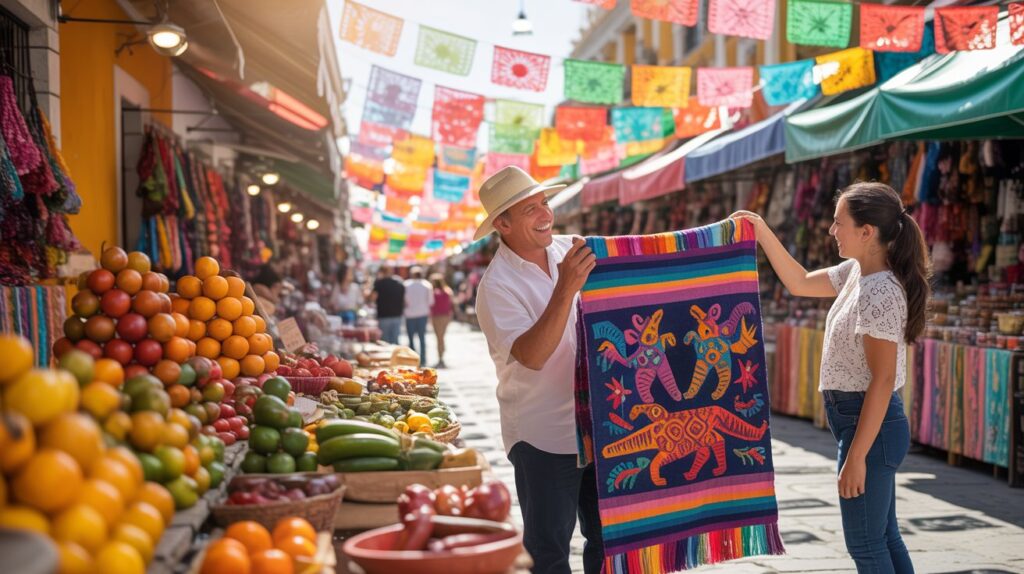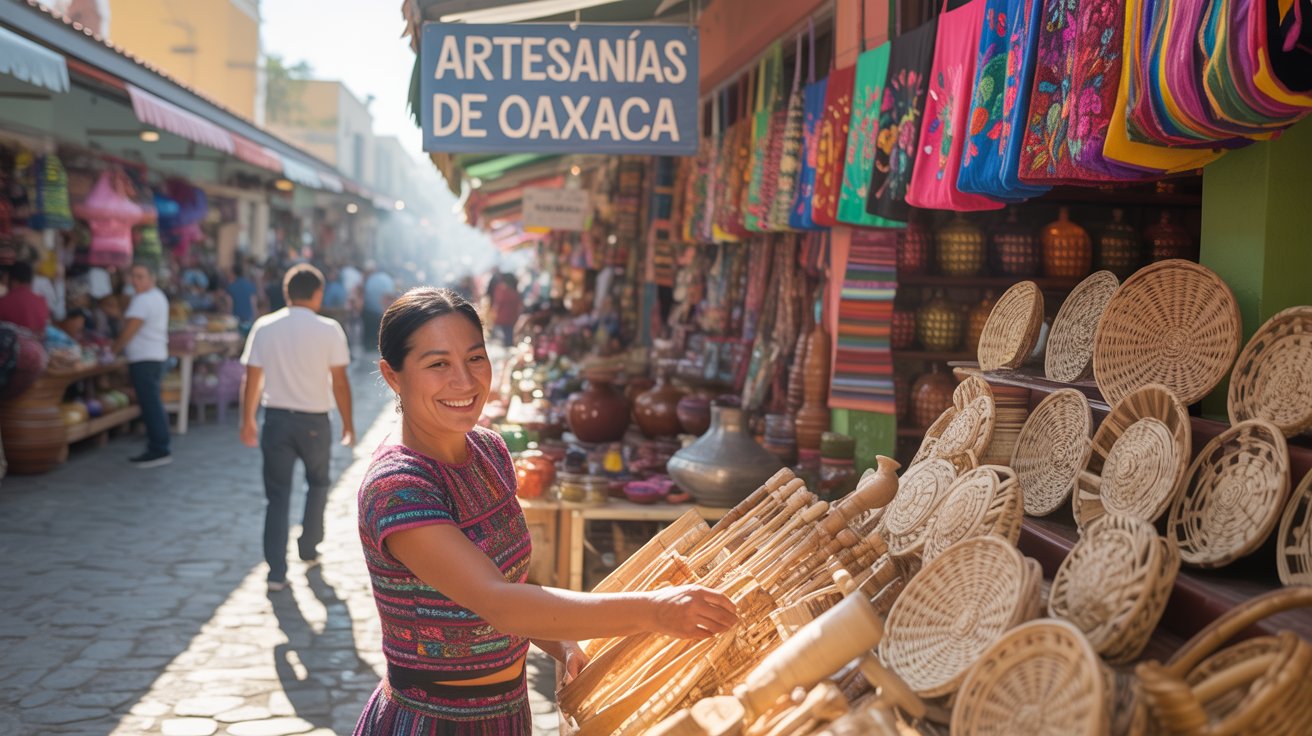Are you thinking about planning an exciting trip to the beautiful and vibrant country of Mexico?
If so, you’ve definitely come to the right place. In this guide, we will share everything that’s important and useful to know before your journey to Mexico, helping you plan your itinerary and pack your bags with confidence and ease.
Mexico is likely the country we have visited more times than any other, and it holds a very special and cherished place in our hearts for countless reasons.
Although there are still many regions and hidden gems in Mexico that we haven’t had the chance to explore yet, we have nonetheless experienced some truly unique adventures and witnessed some absolutely breathtaking sights throughout the country.
Drawing from our extensive experiences and travels in Mexico, we are excited to share with you everything we’ve learned and what you should be well prepared for before embarking on your Mexican adventure.
Where is Mexico located?
Let’s begin this “Good to know” post, following the same style as the others, by talking about where Mexico is located geographically.
We have a feeling that more people are familiar with where Mexico is compared to places like Costa Rica, but we can likely credit the major charter companies for this, as they have included Cancun in their travel programs for many decades.
For those of you who might still be unsure, Mexico is the country that lies directly south of the vast United States.
What often surprises people is just how large and diverse Mexico truly is. Visiting Cancun is just one small part of the country, and there is so much more to explore beyond that single destination.
Far from it, actually.
Most tourists visit Cancun and explore the Yucatan Peninsula, but this represents just a tiny fraction of Mexico.
We also recommend going up to the mountains and seeing San Cristobal, Palenque, Mexico City, and maybe Oaxaca, which can also offer great experiences.
The capital of Mexico is Mexico City…. Not Cancun.
While we’re on the geography topic, we think it’s worth mentioning that Cancun is NOT the capital of Mexico.
It’s the huge metropolis, Mexico City, which you can find right in the middle of the country. With an estimated population of 22 million, it is actually one of the largest capitals in the world.
Join us on an adventure!
Sign up for our travel universe where we write about our travel life, experiences, challenges, and many other exciting travel-related things.
How do you get to Mexico?

Many of the major airlines fly to Cancun and Mexico City.
Air France, KLM, Lufthansa, Air Canada, British Airways, and more. The fastest flight can be done in about 14½ hours, including a stopover.
Prices are around $628-$700 (if you are traveling from Europe) per ticket if you book early, I usually use Aviasales for cheaper ticket. The closer you get to the departure date, the more expensive the ticket will be and the longer the travel time.
All the airlines mentioned above fly with one or more stopovers.
REMEMBER: If you have a stopover in Canada or the USA on your trip, you need to fill out ETA or ESTA accordingly.
Visa for your trip to Mexico
When you travel to Mexico with your european passport, you are allowed to stay in the country for up to 180 days without a visa, and your passport must be valid for 6 months after your return.
On the plane to Mexico, you will receive a tourist card, which just needs to be filled out and handed in before you leave the baggage hall at the airport you land in.
Previously, you would get half of the tourist card back, which you had to keep until you left the country again.
On our trip in November 2022, we suddenly got nervous that we didn’t remember getting this “slip” back and prepared ourselves, after a long search, to pay to register a new tourist card upon departure.
But we learned better and pass the information on here:
We naturally went to the immigration office at the airport and were told there that Mexico abolished this part of the tourist card in spring 2022. You no longer get half of the tourist card to keep. (To our great relief)
Is Mexico dangerous to travel around in?
We might say both yes and no.
We have never experienced anything ourselves, but we have read and heard a lot.
Mexico has a reputation for being an unsafe country to travel to, and of course, you should always be alert, just as you should in any other country.
However, we know that some large drug cartels dominate certain states and cities in Mexico. Our best advice is to avoid seeking out anything these cartels might offer.
That said, with all our travels around by rental car and buses, we have the impression that most places we travel to in Mexico are relatively safe.
Is Mexico a self-drive country?

This is also both a yes and a no.
On the Yucatan Peninsula, there are no problems renting a car and going on adventures on your own.
We have done it ourselves several times, most recently in November 2024
We recommend checking out Discover Cars, which we always use for booking cars.
They search international and local car rentals, and we have never had problems with any.
Looking at other parts of Mexico, it’s not something we would recommend. You might be able to rent a car around Oaxaca, but it’s not something we have done ourselves.
Just be a little cautious.
As the man at the car rental said to us: “Drive carefully and don’t give money to the police.”
We have never been stopped and have driven past many police cars and checkpoints on our way.
Telephony, data, and internet in Mexico
Everything works very well in Mexico.
Check with your telecom provider before your trip to Mexico whether you have roaming for calls and data included in your subscription.
Otherwise, it can be very expensive to have your country of origin phone turned on in Mexico.
We are big fans of the mobile company 3, which has 3LikeHome in Mexico. We could therefore use our phones as if we were in our country.
To avoid using all the data on our phones, we logged onto the internet at the various hotels we stayed at along the way, which worked very well.
If you’re going on a road trip on the Yucatan, we recommend downloading offline maps from Google Maps on your smartphone. That way, you still have a route to follow if you lose signal during the drive. Your GPS still works even if you don’t have internet connection.
Note: Whatsapp is very popular in Mexico – actually throughout Central America, this app is widely used. Usually, tour operators use it, but we have also experienced hotels using it.
What language is spoken in Mexico?
They speak Spanish in Mexico.
A very small population group still speaks Mayan languages and Nahuatl (the language the Aztecs used)
In the big tourist cities, they speak English very well, and you can easily order food, tours, etc.
We have been very happy to have learned a few Spanish phrases on the language app Duolingo.
This at least made it possible to communicate with an elderly lady at a remote market or when we took the bus to the Teotihuacan pyramids near Mexico City.
Money and credit cards on your trip to Mexico?
Mexico uses Mexican Pesos. Colorful bills and coins that can be mistaken for Euro coins. And it is a country that still holds on to cash payments.
On signs, you will also see the dollar sign $, but only with one vertical line which is the Peso sign.
You should be extra careful about this. In Mexico and especially on the Yucatan Peninsula, they really want payment in dollars, but this is a bad deal for you, so always ask to pay in pesos.
It is possible to use credit cards in many places. In shops, restaurants, and supermarkets. Our strategy was always to ask if they accepted cards, as not all places did.
But there are plenty of ATMs around the country, so there is an option to withdraw money during your trip.
Tip: Always use bank ATMs if you can find them
Tips are Standard in Mexico
At restaurants, cafes, gas stations, and more, tipping is expected. We even noticed that some restaurants in highly touristy areas of the Yucatán were particularly insistent about it.
Some restaurants include a service charge on the bill but still expect an additional tip.
We received a helpful guideline from a hotel owner (originally from England but invested in her own small hotel), and we’re sharing it along with our own tipping insights:
– To the person who pumps your gas (they do this for you there) – 5 pesos (We gave 20 pesos. When paying by credit card, we tipped in cash.)
– To the person who helps you pack bags
– To the person who fills your car – 5 pesos (We gave 20 pesos. If paying by card, we tipped cash.)
– To the person who helps pack bags at the supermarket – 5 pesos (We packed our own bags.)
– For parking attendants who assist you – 5 pesos (We often paid for parking itself, so no extra tip was given.)
– For restaurant service – 10-15% of the bill (We agree with this. Sometimes, we just rounded up, resulting in slightly less than 10%. If the service fee was included, we only left a small tip.)
– For hotel housekeeping – 20-50 pesos per night (We usually tipped 15-20 pesos per night when we remembered.)
Other tips we gave:
– Tour guides or boat drivers – 50 pesos
– Small vendors or food stalls – just let them keep the change
– Uber drivers or food delivery – about 10% extra
Tipping is important in Mexico, but we dislike feeling like walking wallets. It’s best to tip those who rely more on tips for their livelihood.
What type of plug is used in Mexico?
Mexico uses the same plugs as the USA: three flat pins. Bring an adapter to charge your phone and other electronics during your trip.
Tip: If you travel with multiple devices, consider bringing an extension cord with 3-4 outlets so you can charge your phone, camera batteries, tablet, and laptop overnight.
Don’t drink tap water in Mexico
Avoid drinking tap water. It’s generally safe for brushing teeth but not for drinking.
Instead, buy bottled water to keep on hand at your hotel, on the road, or to fill reusable bottles for excursions.
We’ve heard that ice cubes are usually made with filtered water, but we personally limit ice cubes in our drinks to be safe.
Mexico’s weather
Due to Mexico’s latitude, much of the country is warm year-round. On the Yucatán Peninsula, cold nights are rare, and rain is usually light.
However, if you visit inland cities like San Cristóbal, Mexico City, or Oaxaca, which are in mountainous regions, evenings and nights can get surprisingly cool.
Bring long pants and a warm fleece or sweater to stay comfortable.
Bring a hat and comfortable footwear
If you plan to visit Mexico’s many pyramids and ruins, bring a hat or cap and comfortable shoes.
Many ruins have little shade, so a hat helps protect your eyes. Also, sturdy shoes or hiking sandals are recommended for climbing some ruins.
Plan and book tickets in advance
When visiting cities like Mexico City or Oaxaca with popular museums, plan your days carefully.
Most museums are closed on Mondays (except New Year’s Day). Also, buy tickets ahead of time, ideally for weekdays, since weekends are crowded (Sundays are free for locals).
We found that tickets for places like the Frida Kahlo Museum and the National Palace often need to be purchased 8-10 days in advance.
What to expect on your Mexico trip
Is Mexico affordable?
Mexico has traditionally offered great value. Though inflation has increased prices somewhat, in November 2022 we found tourist areas to be surprisingly pricey—comparable to Costa Rica, known for being expensive.
Outside tourist hotspots, prices remain low, and you can enjoy delicious meals for prices similar to or less than tacos in Tulum. See our price comparisons for more details.
Wildlife in Mexico
We haven’t seen as much wildlife as in some other countries, but Mexico’s diverse ecosystems desert, mangrove, and jungle mean it hosts more animal species than much of Central America.
In northern Mexico near the U.S. border, you might find black bears and wolves. Elsewhere, armadillos, flying squirrels, jaguars, snakes, and spiders are common.
During our trips, we frequently encountered coatis, raccoons, monkeys, and countless iguanas.
The coastal waters are home to giant whale sharks, curious gray whales, and the incredible Mesoamerican Reef the second-largest reef in the world.
Top attractions in Mexico
Most attractions, especially on the Yucatán Peninsula, are ruins and cenotes.
With around 200 ruins and over 6,000 cenotes, these are the highlights for explorers.
Each ruin has its own unique charm. We’ve fallen in love with the historical sites and have visited about 20, some multiple times.
Cenotes vary widely—from open lakes to small holes where you’re lowered into the water. Some feature long roots dangling into the water, tiny waterfalls, or underground caves with stalactites.
Some are great for swimming, others for diving, and some connect to other cenotes via underwater passages.
Exploring beyond the Yucatán
Away from the peninsula, you’ll find impressive Mayan pyramids and beautiful Aztec ruins.
While cenotes are rare inland, you can experience:
– Pacific beaches where turtles come ashore to lay eggs and hatchlings begin their journey
– Southern villages preserving candle-making and carpet-weaving traditions
– Mountain waterfalls (some petrified) and deep canyons perfect for boating
You can also tour tequila and mezcal distilleries, witnessing the transformation of agave plants into spirits—not just buying bottles in stores.
Toilet etiquette in Mexico
If you see a restroom door marked with a capital M, it is NOT for men.
M stands for mujeres (women).
Men’s restrooms are marked with H (hombres) or C (caballeros).
Women’s restrooms may be marked M (mujeres) or D (damas).
Also, everywhere we’ve traveled, signs advise against flushing toilet paper.
Plumbing often can’t handle it, and you could face the awkward task of reporting a clogged toilet to reception.
Dispose of toilet paper, glue, and bubble wrap in the bin provided next to the toilet.
Tip: Carry a small sanitary bag with toilet paper for road trips or bus rides, as some places aren’t regularly restocked.
Final thoughts for your Mexico trip
This guide isn’t to overwhelm you but to prepare you so nothing unexpected spoils your vacation.
Overall, Mexicans are friendly and welcoming. While we’ve occasionally encountered selfish individuals in tourist areas, don’t let that ruin your experience.
Appreciate those who go above and beyond they are everywhere.
Above all, soak in the vibrant culture and stunning sights Mexico is an incredible travel destination!
We wish you a fantastic trip to Mexico.
If you have questions or found this post helpful, please leave a comment below—we’d love to hear from you.

